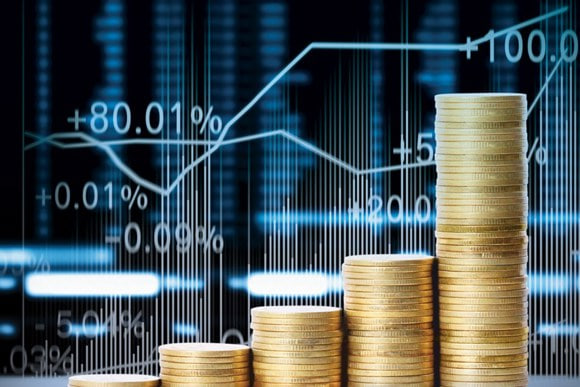Decoding the Indian SENSEX: A Deep Dive into Market Dynamics and Investment Opportunities
Meta Description: Unlock the secrets of the SENSEX 30 index! This in-depth guide explores Indian market dynamics, investment strategies, and the factors driving SENSEX performance, offering expert insights for both seasoned investors and newcomers. #SENSEX #IndianStockMarket #InvestmentStrategies #MarketAnalysis #IndiaEconomy
Imagine this: You're sipping your morning chai, gazing at the rising sun over the bustling streets of Mumbai, and your eyes fall upon the SENSEX 30 index ticking ever so slightly upwards. That subtle movement, that fraction of a percentage point, represents the heartbeat of India's economic powerhouse. It’s a story whispered in numbers, a narrative woven from the triumphs and tribulations of countless companies, reflecting the pulse of a nation on the rise. But what really drives this index? Is it a smooth ride or a rollercoaster? And most importantly, how can you navigate this dynamic market to benefit from its potential? This isn't just another dry market report; this is your personalized guide to understanding the SENSEX, demystifying its intricacies, and equipping you with the knowledge to make informed investment decisions. We'll delve deep into the factors influencing the SENSEX, explore effective investment strategies, and address your burning questions with straightforward explanations and insightful examples. Whether you're a seasoned investor seeking to refine your approach or a curious newcomer keen to learn the ropes, this comprehensive analysis will illuminate the path to success in the vibrant Indian stock market. We’ll uncover hidden trends, dissect market fluctuations, and even share some personal anecdotes from years spent tracking this fascinating index. So, grab your favorite beverage, settle in, and let's unlock the secrets of the SENSEX together! This isn’t just about numbers; it's about understanding the human element driving the Indian economic engine. Get ready to navigate the exciting world of Indian finance!
SENSEX 30 Index: A Comprehensive Overview
The SENSEX 30, or the S&P BSE SENSEX, is India's premier stock market index. It's a benchmark index tracking the performance of 30 of the largest and most actively traded companies listed on the Bombay Stock Exchange (BSE). These companies represent a diverse cross-section of India's economy, spanning sectors like technology, finance, energy, and consumer goods. Think of it as a snapshot of the overall health and growth of India's corporate landscape. It’s not just a collection of numbers; it's a reflection of India's economic journey. The SENSEX's performance is closely watched by investors globally, as it provides key insights into India's economic prospects and investment climate. Understanding its movements is crucial for anyone looking to invest in the Indian market, whether directly in individual stocks or through ETFs (Exchange Traded Funds) that track the index. Its fluctuations are a window into the broader economic narrative, influenced by everything from global events to domestic policy changes.
Key Factors Influencing SENSEX Performance
Several factors intricately intertwined influence the SENSEX's daily dance. Let's dissect the key players:
-
Global Economic Conditions: The SENSEX, like many other global indices, is susceptible to the ebb and flow of international economic trends. Think global recessions, geopolitical tensions (hello, Ukraine conflict!), and fluctuations in commodity prices – these all impact investor sentiment and, consequently, the SENSEX.
-
Domestic Economic Indicators: India's own economic health plays a starring role. GDP growth, inflation rates, fiscal policy decisions, and monetary policy adjustments by the Reserve Bank of India (RBI) – these are all major players in the SENSEX drama. A strong rupee, for instance, typically boosts investor confidence.
-
Government Policies and Regulations: Government initiatives – from tax reforms to infrastructure projects – can significantly affect the SENSEX. Positive policy changes often lead to increased investor optimism, while uncertainty can trigger sell-offs.
-
Sector-Specific Performance: The performance of individual sectors within the economy heavily influences the SENSEX. For example, a boom in the IT sector might lift the index, while a downturn in the real estate sector could dampen its spirits.
-
Investor Sentiment and Speculation: Market psychology plays a significant role. Investor confidence, driven by news, rumors, and overall market sentiment, can lead to significant price swings, sometimes irrespective of underlying fundamentals. It’s the emotional rollercoaster that keeps things interesting!
Investment Strategies for the SENSEX
Investing in the SENSEX can be achieved through several avenues:
-
Direct Stock Investments: For seasoned investors, directly investing in individual SENSEX 30 companies offers the potential for higher returns, but it also carries higher risk. Thorough research and a well-diversified portfolio are essential.
-
Exchange Traded Funds (ETFs): ETFs that track the SENSEX provide a more diversified and convenient way to gain exposure to the index. These offer a basket of the 30 constituent stocks, making it easier to manage and offering lower transaction costs than buying individual stocks.
-
Mutual Funds: Mutual funds that invest in SENSEX stocks offer professional management and diversification, but with fees attached. This is often a preferred choice for less experienced investors.
A Word on Risk Management: It's Not All Smooth Sailing!
Investing in the SENSEX, like any investment, carries inherent risks. Market volatility, economic downturns, and unexpected events can all impact returns. Diversification, thorough research, and a long-term investment horizon are crucial for mitigating these risks. Remember, patience is a virtue in the stock market – don't panic sell at the first sign of trouble!
Understanding SENSEX Fluctuations: Case Studies
Let's look at some historical examples to illustrate the factors influencing SENSEX movements:
-
The 2008 Global Financial Crisis: The global financial crisis significantly impacted the SENSEX, mirroring the worldwide downturn. Investor confidence plummeted, leading to a sharp decline in the index. This highlights the influence of global events on even the most robust domestic markets.
-
Demonetization in India (2016): India's demonetization policy had a mixed impact on the SENSEX. While initially causing some uncertainty, the long-term effects were relatively less dramatic than initially feared, showcasing the market's resilience and ability to adapt. However, this shows the impact of significant policy shifts.
-
The COVID-19 Pandemic (2020-2023): The pandemic initially led to a sharp drop in the SENSEX, reflecting global economic uncertainty. However, a swift recovery followed, driven by government stimulus measures and the resilience of certain sectors, demonstrating the market's reactive nature and ability to recover from shocks.
Frequently Asked Questions (FAQs)
-
Q: What is the best time to invest in the SENSEX? A: There's no magic answer. Market timing is notoriously difficult. A long-term investment strategy focused on diversification and risk management is generally more successful than trying to predict short-term market movements.
-
Q: How risky is investing in the SENSEX? A: Like any investment, it carries risk. However, diversification through ETFs or mutual funds can mitigate some of this risk. Understanding your risk tolerance is key.
-
Q: Are there any fees associated with investing in the SENSEX? A: Yes, brokerage fees, ETF expense ratios (if using ETFs), and mutual fund expense ratios (if using mutual funds) are all potential costs.
-
Q: How can I track the SENSEX? A: Numerous financial websites and apps provide real-time SENSEX data, charts, and historical information.
-
Q: What are the advantages of investing in the SENSEX? A: Potential for high returns, diversification across various sectors, and relatively easy access through ETFs and mutual funds are key advantages.
-
Q: What is the difference between the SENSEX and the Nifty 50? A: Both are major Indian indices, but the Nifty 50 is based on the National Stock Exchange of India (NSE), while the SENSEX is based on the Bombay Stock Exchange (BSE). They have some overlapping companies but are not identical.
Conclusion: Charting Your Course to SENSEX Success
Navigating the SENSEX requires understanding its nuances, staying informed about relevant economic indicators, and employing a well-defined investment strategy. This isn't a get-rich-quick scheme; it's about playing the long game, managing your risk, and understanding the forces that shape the Indian economy. Remember, the SENSEX is more than just numbers; it's a reflection of India's dynamic economic landscape, a story unfolding day by day. By equipping yourself with the knowledge and insights presented here, you'll be well-positioned to make informed decisions and participate in this exciting journey. So, buckle up, and let's ride the wave of India's economic growth!



